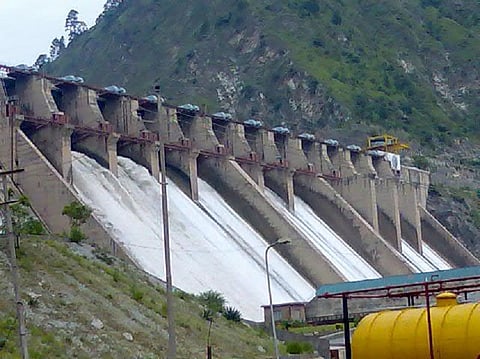
- Home
- Live Blog
- Breaking News
- Top Headlines
- Cities
- NE News
- Sentinel Media
- Sports
- Education
- Jobs

As the flood situation in Assam remains a cause for worry, Golaghat district in particular has been hard hit by killer surges of water released from NEEPCO’s Doyang hydel project. People in Golaghat are still taking stock of damage due to flash floods that hit the district last week after sluice gates of this project in Wokha district of Nagaland, were opened to release a huge mass of water pressing on the dam. Enormous surges in Doyang and Dhansiri rivers swept across many villages in Sarupathar, Merapani, Morongi, Khumtai, Golghat and Bokakhat revenue circles. At least four lives were lost, over 1 lakh residents affected, croplands and fisheries inundated, and sections of key roads including NH 37 damaged. Thick layers of sand and rock debris left upon the fields are now making it that much harder for farmers to go for quick harvesting crops. Khumtai legislator Mrinal Saikia has lodged an FIR against NEEPCO for sudden release of water without proper notice to Golaghat district administration, while Krishak Mukti Sangram Samiti has alleged that the deluge occurred because the 75 MW Doyang project authority has been storing vast amounts of water to generate additional electricity. On its part, NEEPCO has already brought out ads to inform the public how torrential rain in the upper catchment area of Doyang resulted in dangerous rise of spilling level in the reservoir, making it imperative to release excess water.
As the controversy rages, it brings to mind the destruction wrought by Ranganadi river in Lakhimpur district last year. The NEEPCO bosses had then sought to battle the ‘misinformation’ that its hydel project at Yazali was the cause of the flash flood which claimed about a dozen lives. It was pointed out that excessive rains over the upper reaches in Arunachal had resulted in sudden inflow at least seven-fold larger than the capacity of the small reservoir, so water had to be released to protect the dam. Considering that Ranganadi project is run-of-the-river type, it was even claimed that floods in Lakhimpur would be deadlier if a part of the water is not regularly diverted from Ranganadi to Dikrong river for running the turbines. Earlier in 2016, a blame game erupted between Barpeta and Baksa district administrations and Kurichhu hydel project authority in Bhutan over flash floods that surged through parts of lower Assam. The deluge was attributed to sudden release of water from the dam, but Kurichhu authority maintained that it being a run-of-the-river project with no reservoir, the surge which caused the damage downstream was not stored water but simply heavy downpour due to cloudburst. Such controversies are thus pitting Assam as a basin State against hilly Northeast States or neighbouring country Bhutan. What all stakeholders must factor in is that extreme weather events are with us to stay, given the wrenching climate changes at global level.
We worry about high seismicity of the NE region, but what about extreme weather events that are becoming so frequent? Their study requires hard data for analysis, but researchers bemoan the absence of data which the government supposedly withholds citing ‘national security’ grounds. So it is not just China that often plays hardball with hydrological data, the Government of India is not very forthcoming either. This culture of secrecy in turn stokes conspiracy theories in the minds of people in this region about the true intentions of governments and big hydropower companies. Even as anti-mega dam movements have sprung up in this region, the Centre is clearly set on its agenda to tap hydropower in the Northeast on large scale to meet the country’s energy needs. What happened in Laos last month should serve a timely warning to this debate. Long aspiring to be the ‘battery of South East Asia’ by leveraging the vast hydro resources of Mekong river system, Laos has been on a dam building spree with power already making up 30 percent of its exports. On 23rd July, the Xepian-Xe Nam Noy dam collapsed in the southernmost province of Attapeu bordering Cambodia and Vietnam. Water levels across the Mekong had been rising fast over a week due to tropical storm Son-Ting, causing a huge mass of water to flow into the reservoir and fracture the dam. A wall of 5 billion cubic meters of water rolled downstream to the Xe-Pian river, wiping out hundreds of village homes, leaving at least 26 dead and over a hundred missing. Such environmental disasters teach us the need to think anew about dam design and associated flood warning and mitigation systems. But for starters, the culture of secrecy that smacks of arrogance and exploitation has to end.